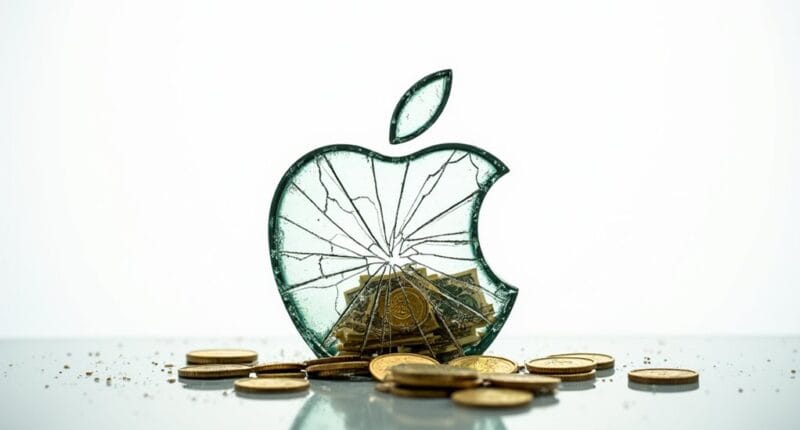Apple’s iron grip on its App Store is finally cracking. Courts worldwide are forcing the tech giant to allow developers to use external payment options, threatening its lucrative 15-30% commission structure. Tim Cook’s strategy of maintaining strict control now looks like a costly miscalculation as regulatory pressure mounts and developers gain newfound freedom. The App Store’s multibillion-dollar revenue model faces an uncertain future. The full impact of this seismic shift remains to be seen.

Apple’s iron grip on its App Store is finally starting to crack. The tech giant’s long-standing control over its digital marketplace – a crown jewel that generated billions in revenue through mandatory commissions – is being forcibly pried open by courts and regulators worldwide. Those sweet 15-30% cuts on every in-app purchase? Not looking so guaranteed anymore.
The company’s strict rulebook, once iron-clad, is getting some serious edits. Developers who were previously forced to use Apple’s payment system can now add links sending users to external payment options. No more monopoly on the money flow. While Safari remains available for web distribution, developers seeking App Store placement must still navigate Apple’s complex guidelines.
Apple’s ironclad grip loosens as developers gain freedom to route payments outside the App Store’s walled garden.
And here’s the kicker – Apple can’t even charge fees for these outside transactions or try to scare users away from them. The company has already stated they will strongly disagree and appeal the court’s decision. Talk about losing control of your own sandbox.
This isn’t just about a few policy tweaks. The courts aren’t playing around, demanding immediate compliance with anti-steering rules and showing zero patience for Apple’s usual delayed-implementation tactics.
Just like how market makers ensure trading liquidity in stock exchanges, Apple’s App Store once maintained strict control over app distribution channels.
Meanwhile, the EU is throwing its weight around, requiring “trader status” verification that directly impacts which apps can even show up in European markets.
The technical headaches for developers haven’t gone away either. They’re still juggling public APIs, keeping apps current across OS versions, and dealing with Apple’s notoriously opaque review process. One wrong move and poof – your app’s gone.
But now at least they can dream about keeping more of their earnings.
For Apple, this is a multibillion-dollar nightmare in slow motion. Their carefully constructed revenue fortress, built on controlling every aspect of app distribution and monetization, is showing serious cracks.
The company that once dictated terms to every developer who wanted access to iPhone users now has to play by others’ rules. Tim Cook’s bet on maintaining absolute App Store control might go down as one of tech’s most expensive miscalculations.





